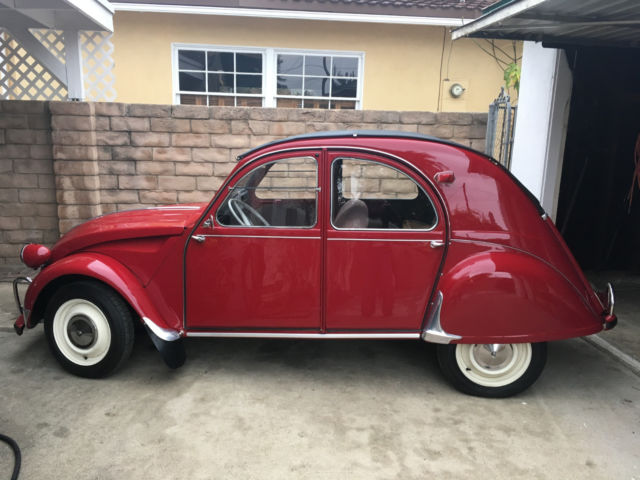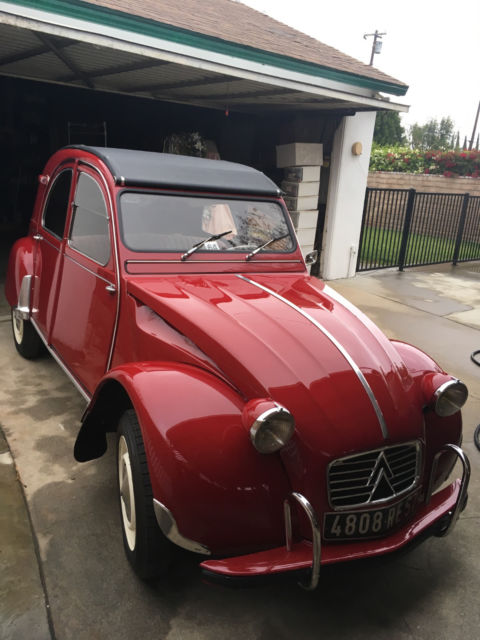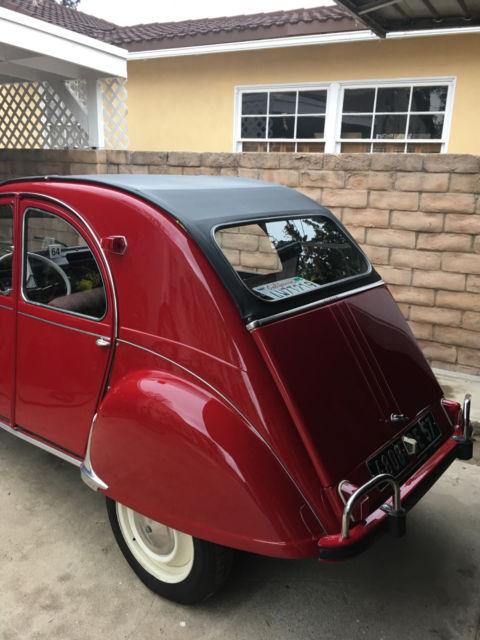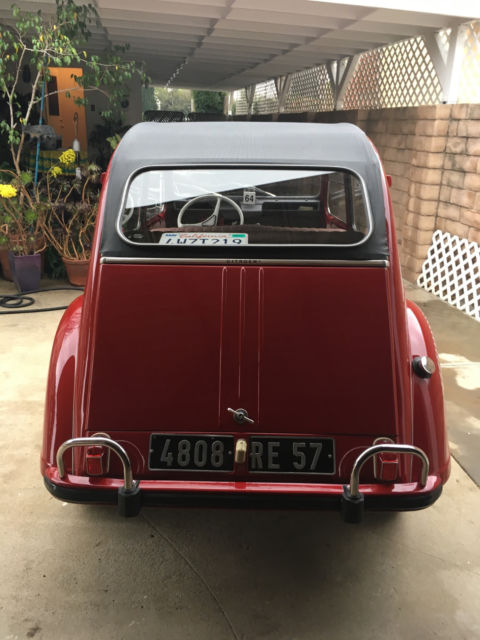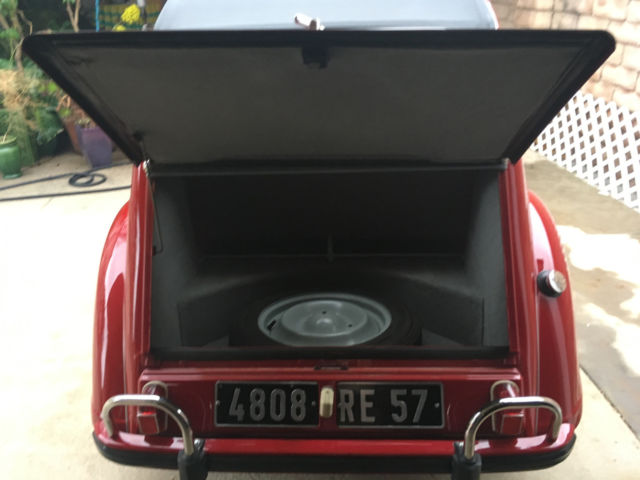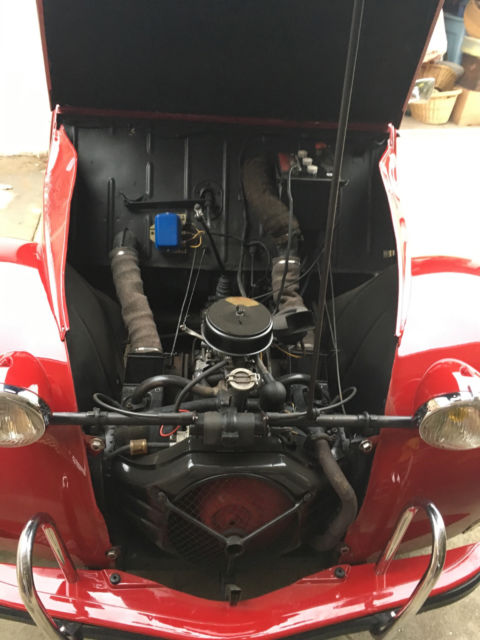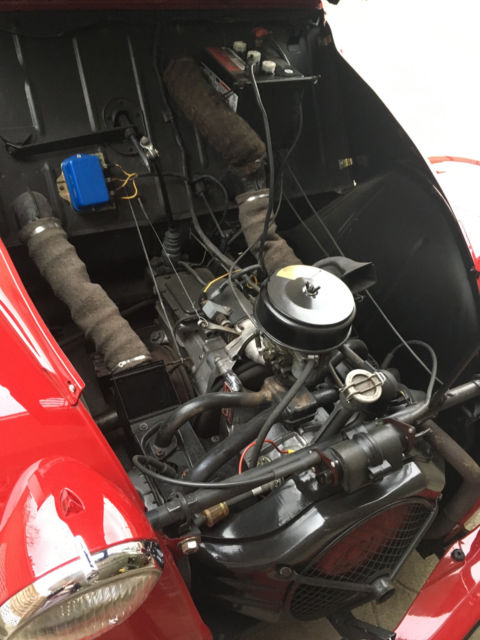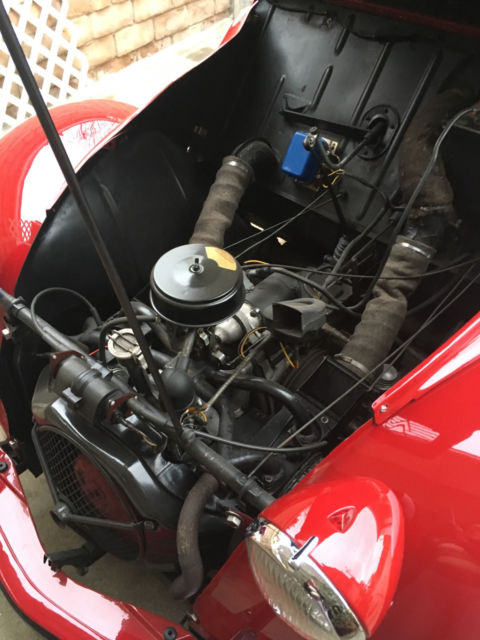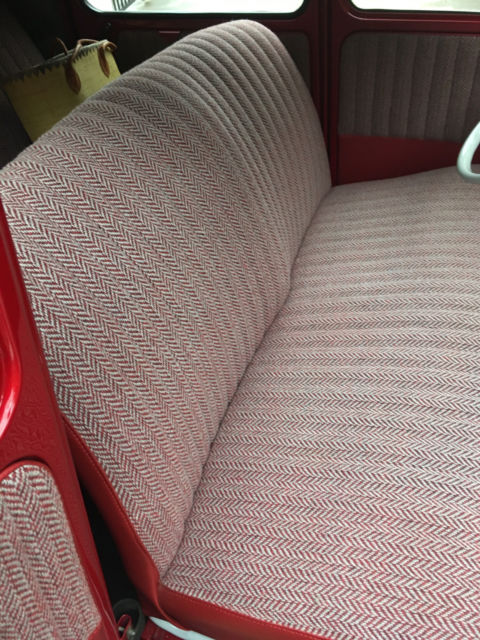1964 Citroen 2cv -The French Model "T".
- Make: Citroën
- Model: 2CV
- Type: 4 DOOR
- Year: 1964
- Mileage: 999,999,999
- Color: Red
- Engine size: 2 CYLINDER
- Number of cylinders: 2
- Fuel: Gasoline
- Transmission: Manual
- Drive type: FWD
- Interior color: Red
- Drive side: Left-hand drive
- Options: Convertible
- Vehicle Title: Clear
- Location: Granada Hills, California, United States
Description
The car was imported from Europe about 5 years ago and was completely restored inside and out. It has a California title and for the last 2 to 3 years was driven occasionally.
Winner must paypal $500 within 24 hours. The rest is to be paid by cashier's check and/or bank transfer.
Buyers are responsible for pickup or shipping. We can assist you with shipping (either internationally or domestically).
When the 2CV first appeared, it surprised the world by being a car stripped to basics in the extreme, by being out of fashion with its added-on headlights, and by its low price. (In 1948 - 1950, the price of the 2CV was about US$650, about half that of a Volkswagen beetle.) Only the Citroën name stopped the car from being thought a joke. But the 2CV had a surprising career. It received popular approval in the rural world for the go-everywhere suspension, was adored by the low earners for its unbeatable price, and loved by everybody for what it represented: a car beyond time.
Early sales were restricted to doctors and farmers, felt to be in most need of a car. At first there was only one colour, gray, to help maximise production. Many other colours followed.
Very few changes were made over the years, most being to the mechanics rather than the outer body. When, in the USA, the headlamps were changed from round to rectangular, they were then returned to round headlights after a few years. After all, an ugly duckling has round not square eyes.
The 2CV was conceived as an economical car, both to buy and to maintain. This allowed both fast manufacture and slow general deterioration.
For a simplified manufacture, the same screw was used practically everywhere, the motor could be put in place very easily and held by four screws. The same applied for the sheet metal bodywork.
For low deterioration, longevity was favoured rather than performance, which translated technically into a larger play between pieces (in thousandths of a millimetre) and, above all, simple but effective solutions to problems.
- First presented in 1938 as the "Très Petite Voiture" (very small car - the TPV), but production was delayed by WWII, so the 2CV was not commercially produced until 1948
- Production stopped: 27 July 1990 at Mangualde, Portugal
- 3,872,583 2CV cars and vans made. Some claims go higher than this when variations are included.
- Empty car weight: 600kg
- Engine: 375cc 9hp, 65 km/h top speed
- 30 different berline models built
The 2CV was also made as a van (camionette/fourgonette),
and as a 4 x4 - the Sahara - with a second engine to drive the rear axle. Only 694 of these were built. - During its 42-year production, only technical parts like the engine, transmission and brake-system were updated - the body remained the same.
 Citroen 2cv The French Model "T"
Citroen 2cv The French Model "T"
Mileage: 999,999,999
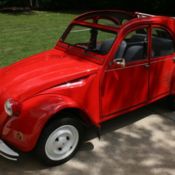 Citroen 2CV 1989 - A beautiful original example of this wonderful French vehicle
Citroen 2CV 1989 - A beautiful original example of this wonderful French vehicle
Mileage: 66,431
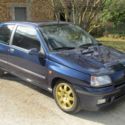 Clio 16 valve Mk1 European French hot hatch like Williams Citroen Peugeot GTi
Clio 16 valve Mk1 European French hot hatch like Williams Citroen Peugeot GTi
Mileage: 84500
 Twin engined 4x4 AWD Citroen 2CV Sahara very rare French production car SORTED
Twin engined 4x4 AWD Citroen 2CV Sahara very rare French production car SORTED
Mileage: 55,300
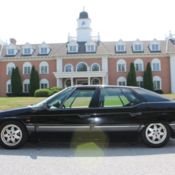 Citroen XM 2.0i Comfort - Black - 1991 - UNIQUE FRENCH CLASSIC - LOW RESERVE
Citroen XM 2.0i Comfort - Black - 1991 - UNIQUE FRENCH CLASSIC - LOW RESERVE
Mileage: 148,100
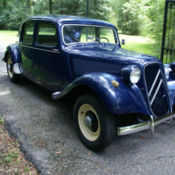 1955 CITROEN TRACTION AVANT 11B VINTAGE FRENCH CLASSIC NO RESERVE
1955 CITROEN TRACTION AVANT 11B VINTAGE FRENCH CLASSIC NO RESERVE
Mileage: 78,654
 Citroen 1986 CX Prestige Rust Free Works great Rare French Car Not BX
Citroen 1986 CX Prestige Rust Free Works great Rare French Car Not BX
Mileage: 11,100
 1952 CITROEN TRACTION AVANT ORIGINAL FRENCH CLASSIC not FORD NO RESERVE
1952 CITROEN TRACTION AVANT ORIGINAL FRENCH CLASSIC not FORD NO RESERVE
Mileage: 34764
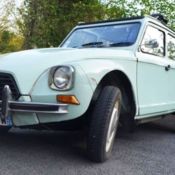 1973 Citroen Dyane convertible huge sunroof, similar 2CV 50mpg French Land Rover
1973 Citroen Dyane convertible huge sunroof, similar 2CV 50mpg French Land Rover
Mileage: 88,746
 1953 Citroen Traction Avante NUMBERS MATCHING FRENCH CLASSIC 54416 Miles Black 4
1953 Citroen Traction Avante NUMBERS MATCHING FRENCH CLASSIC 54416 Miles Black 4
Mileage: 54416
